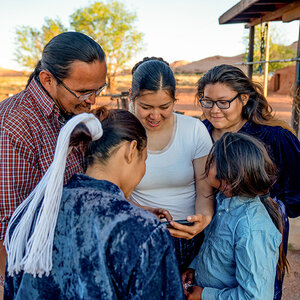The Greater Good: How Philanthropy Drives the American Economy and Can Save Capitalism
Claire Gaudiani claims that individual philanthropists have generated economic growth throughout American history by investing in people, property, and innovative ideas. According to the author, these partnerships have created a balance between capitalism and democracy by injecting wealth into poorer communities and promoting upward mobility. In her examination, Gaudiani, a senior research scholar from Yale Law School and former president of Connecticut College, asserts that joint philanthropic ventures initiated by individuals have promoted innovative ideas long before corporations or government entities supported them. However, she cautions that our history of prosperity and social mobility is jeopardized by an increasing concentration of wealth within the highest income bracket and the dwindling of civic involvement in our community over the past thirty years.
Gaudiani, as former volunteer president of the New London Development Corporation, has organized efforts to revitalize New London, an economically depressed port city in Connecticut, through business, community and government partnerships. She has seen first-hand the impact of committed donors and volunteers working together to improve a community and builds a strong case for investing in human, social and physical capital in The Greater Good. The book, divided into 11 chapters, analyzes the role of philanthropy in the United States as an economic force and illustrates the author's points by using inspiring examples.
The first chapter explores the tradition of generosity of Americans dating back to the colonial period and makes the distinction between giving as charity and investing in others to promote prosperity, and social and economic freedoms. An example she uses in the first chapter is that of Provident Hospital, the first inter-racial training hospital created by aspiring African-American medical students, wealthy donors and other volunteers. Eventually the hospital developed a productive workforce from marginalized citizens and stimulated the local economy by attracting businesses that served the needs of the hospital staff, patients, and visitors. Another example Gaudiani cites is the March of Dimes campaign, which, thanks to the contributions from millions of ordinary people, eradicated polio.
In the second and third chapters, the author shows how funding for education and workforce development has improved lives by increasing social mobility. As a result of countless donations by such individuals as Mary Garrett, the founder of John Hopkins Medical School, and Osceola McCarty, a cleaning woman who contributed her life savings of $150,000 to a scholarship fund, numerous individuals were able to pursue an education, develop their talents, and further their contributions to society. Chapter six delves into the American notion of the "pursuit of happiness," which the author asserts imbued a sense of optimism in Americans, motivating them to engage in philanthropic investments and promoting upward mobility. In the next two chapters, Gaudiani explores the obstacles and resources needed for sustaining our tradition of generosity despite increased isolation and apathy. These issues have a particular urgency since the largest anticipated intergenerational transfer of wealth in history is to take place within the next fifty years.
The following chapter serves as a cautionary tale, analyzing misguided donations that have negatively impacted the recipients and increased cynical attitudes toward philanthropy. Successful philanthropic ventures are examined in Chapter eleven before culminating into the final chapter, which presents ideas to improve our society through what the author refers to as investment-related generosity. Her ideas include developing meaningful partnerships, advancing children, creating more home ownership opportunities for low- and lower-middle-income citizens, and building community centers.Gaudiani presents a compelling argument that partnering with people in need and helping them to invest in their communities reap enormous benefits. Some readers may find her proposals overly idealistic and be skeptical about whether these ideas will work in real-life situations. Her argument that the Founding Fathers' concept of the "pursuit of happiness" included philanthropy is a bit contrived. However, her writing is extremely inspiring and she has personally been involved in initiatives that have changed a struggling community. Although her ideas may strike some as impractical, we need to remember that the many accomplishments described in this book and other advances in education, science, and commerce would not have occurred if we failed to embrace new ideas. Perhaps the most valid point she makes in The Greater Good is we all have the capacity to create something wonderful and bigger than ourselves if we have the energy and courage to invest in others. We owe it our communities and ourselves to try.
For citations to additional materials on this topic refer to the Literature of the Nonprofit Sector Online, using the subject headings "Philanthropists" or "Philanthropy-analysis".







